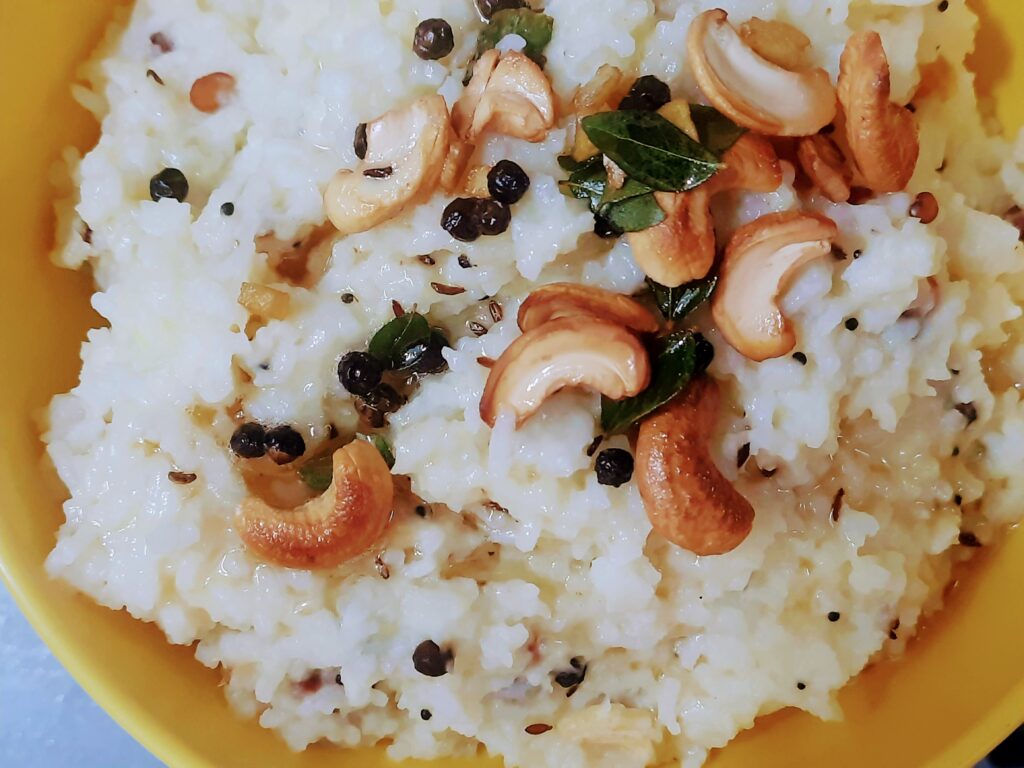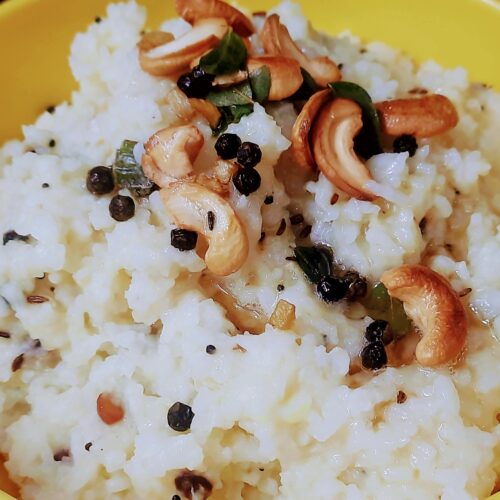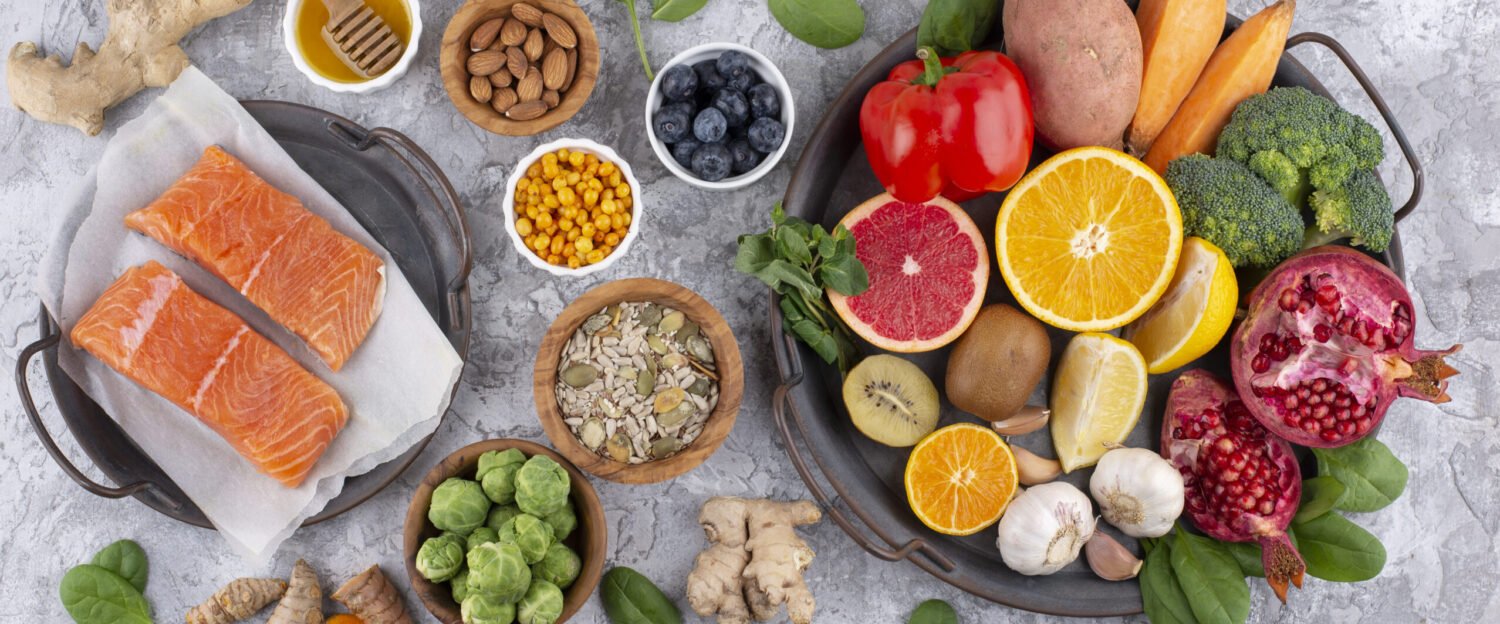Table of Contents

Introduction:
Katte Pongali, a cherished dish in South Indian culinary tradition, represents a harmonious blend of flavors and textures. This unique variation adds a touch of coastal essence to the classic Pongal. Begin by combining one cup of Rice and a quarter cup of golden split Moong Dal in a pot. Allow them to dance together in four cups of water until they create a symphony of perfectly cooked grains. Meanwhile, in a separate pan, concoct a medley of flavors.
Heat a generous spoonful of Ghee, i personally use home made ghee. infuse it with the aromatic dance of Cumin seeds, the warmth of black pepper, and the gentle hum of asafoetida. Introduce finely chopped ginger, a chorus of green chilies, and a handful of Cashews, letting them join the melody until the cashews reach a golden crescendo. Pour this flavorful composition into the pot of rice and dal, creating a flavorful ensemble. Garnish with a flourish of curry leaves, invoking the essence of the lush South Indian landscapes. The result is Katte Pongali, a culinary symphony that elevates the traditional Pongal experience with coastal-inspired notes.
“Katte Pongali” may be a regional or local variation, and the specific recipe might vary.
How to make Katte Pongali – Recipe Card:
However, if you’re looking for a traditional Pongal recipe, here’s a basic recipe for Ven Pongal, a popular South Indian dish made with rice and lentils:

Katte Pongali Recipe
Equipment
- Pressure Cooker
- Small Pan
Ingredients
- 1 cup rice
- 1/2 tbsp ` cup split yellow moong dal lentils
- 4 cups water
- 1 tablespoon ghee clarified butter
- 1 tablespoon oil
- 1 teaspoon cumin seeds
- 1 teaspoon black pepper coarsely ground
- 1/2 inch ginger finely chopped
- 2 green chilies finely chopped
- 10-12 cashews
- A pinch of asafoetida hing
- Curry leaves a sprig
- Salt to taste
Instructions
- Prepare Rice and Lentils:
- Rinse 1 cup of rice and 1/4 cup of moong dal under cold water until it runs clear.
- In a pot, combine rice, lentils, and 4 cups of water. Bring to a boil, then reduce heat to simmer. Cook until both rice and lentils are soft and well-cooked.
- Tempering:
- In a separate pan, heat 1 tablespoon of ghee and 1 tablespoon of oil over medium heat.
- Add 1 teaspoon of cumin seeds, allowing them to sizzle.
- Introduce 1 teaspoon of coarsely ground black pepper, finely chopped ginger, and 2-3 finely chopped green chilies. Sauté until aromatic.
- Cashew Crunch:
- Add 10-12 cashews to the pan, stirring until they turn golden brown.
- Aroma Infusion:
- Sprinkle a pinch of asafoetida into the mixture, enhancing the aroma.
- Curry Leaves Elegance:
- Finish the tempering by adding a sprig of curry leaves, letting them crisp up in the mixture.
- Combine and Mix:
- Pour the tempered mixture into the cooked rice and lentils. Mix thoroughly, ensuring an even distribution of flavors.
- Final Seasoning:
- Add salt to taste and stir well. Taste and adjust the seasoning as needed.
- Serve:
- Your Katte Pongal is now ready to be served hot.
- Garnish with additional curry leaves for a fresh touch.
- Enjoy the unique flavors and aromatic essence of this Katte Pongal, a delightful South Indian dish that captures the essence of tradition with a flavorful twist!
Nutrition:
The nutritional content of Katte Pongal can vary based on specific ingredients used and portion sizes. Below is a general overview of the nutritional components of a standard Katte Pongal recipe:
Nutritional Content per Serving (approximately):
- Calories: 300-350 kcal
- Protein: 8-10 grams
- Carbohydrates: 50-60 grams
- Dietary Fiber: 4-6 grams
- Fat: 8-10 grams
- Saturated Fat: 3-4 grams
- Cholesterol: 10-15 mg
- Sodium: 500-600 mg
- Potassium: 200-250 mg
Note: These values are approximate and can vary based on specific ingredients and portion sizes. Ghee, cashews, and other additional ingredients contribute to the overall calorie and fat content.
Key Nutrients and Benefits:
- Protein: Lentils (moong dal) contribute a good amount of protein, essential for muscle repair and overall body function.
- Carbohydrates : Rice provides a significant portion of carbohydrates, offering a quick source of energy.
- Fiber: Both rice and lentils contain dietary fiber, supporting digestive health and providing a feeling of fullness.
- Healthy Fats: Ghee and cooking oil contribute healthy fats, essential for nutrient absorption and overall well-being.
- Vitamins and Minerals: The dish contains various vitamins and minerals, including B vitamins from lentils and essential minerals like iron, magnesium, and potassium.
Note: While Katte Pongal is a nutritious and wholesome dish, it’s essential to consider overall dietary balance and individual health needs. Adjustments can be made, such as using whole grain rice or adjusting the amount of ghee, to align with specific dietary preferences or restrictions.
